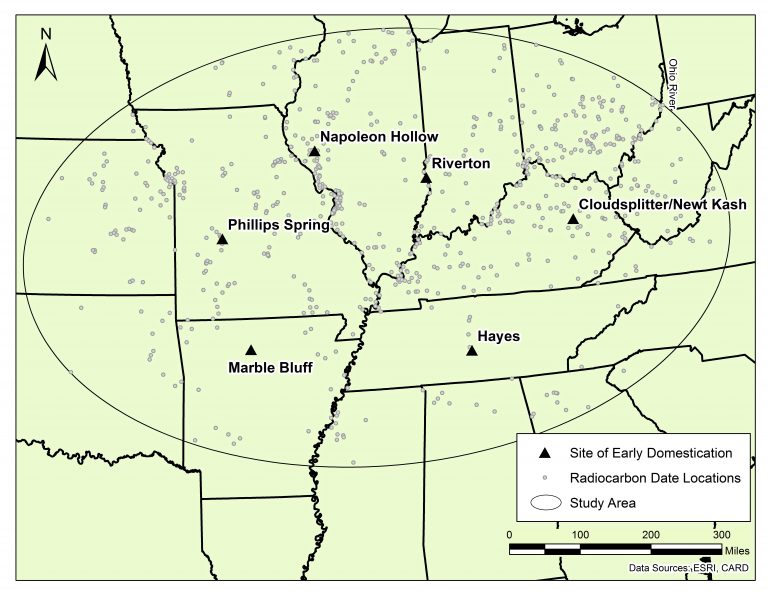SALT LAKE CITY, Utah, Aug. 7, 2016 (Gephardt Daily) — Which came first in the early history of humans:
- The planting and domestication of crops, which created a food surplus and allowed the population to grow, or
- The increase in population, which sent the first farmers scrambling to feed the extra mouths?
According to a new study from the University of Utah, necessity was the mother of invention. A population boom explains why the people of eastern North America planted and domesticated plants for the first time on the continent approximately 5,000 years ago.
“Domesticated plants and animals are part of our everyday lives, so much so that we take them for granted,” said Brian Codding, senior author of the study published online Aug. 2 by the British journal Royal Society Open Science.
“But they represent a very unique thing in human history. They allowed for large numbers of people to live in one place. That ultimately set the stage for the emergence of civilization.”
Graduate student Elic Weitzel, the study’s first author, said agricultural innovations changed the world.
“For most of human history, people lived off wild foods – whatever they could hunt or gather,” Weitzel said, in a news release from the University of Utah.
“It’s only relatively recently that people made this switch to a very different method of acquiring their food. It’s important to understand why that transition happened.”
The study dealt not with a full-fledged agricultural economy, but with the earlier step of domestication, when early people in eastern North America first started growing plants they had harvested in the wild: squash, sunflower, marshelder and a chenopod named pitseed goosefoot, a pseudocereal grain closely related to quinoa.
Codding, a U of U assistant professor of anthropology, said at least 11 plant domestication events have been identified in world history, starting with wheat about 11,500 years ago in the Middle East.
The eastern North American plant domestication event, which began around 5,000 years ago, was the ninth of those 11 events and came after a population boom 6,900 to 5,200 years ago, he said.
For many years, two competing theories have sought to explain the cause of plant domestication in eastern North America: First, population growth and resulting food scarcity prompted people to grow foods on which they already foraged. Second, a theory called “niche construction” or “ecosystem engineering” that basically says intentional experimentation and management during times of plenty – and not immediate necessity – led people to manage and manipulate wild plants to increase their food supply.
“We argue that human populations significantly increased prior to plant domestication in eastern North America, suggesting that people are driven to domestication when populations outstrip the supply of wild foods,” Weitzel said.
“The transition to domesticating food allowed human populations to increase drastically around the world and made our modern way of life possible,” he added.
“People start living near the fields. Whenever you’ve got sedentary communities, they start to expand. Villages expand into cities. Once you have that, you have all sorts of social changes. We really don’t see state-level society until domestication occurs.”
The full study and methods of investigation used can be found by clicking here.








